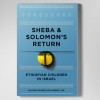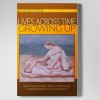Book Review: The Body Speaks: Body Image Delusions and Hypochondria By David Rosenfeld. Karnac, 2014.Reviewed by Nathan Szajnberg, MD
Courage comes to mind when reading these case histories. Courage in the sense of the
word’s origin, coeur, of the heart. “Pierre”, a six foot four psychotic twenty-year old with a violent history, enters for a first session and stands near Dr. Rosenfeld. He becomes increasingly agitated. Shortly thereafter, as Pierre left angrily, he punched the door, broke the lock. Rosenfeld ran down the stairs to help him. Pierre is in and out of hospital. We listen to Rosenfeld persistence and perceptiveness to return this fellow to sanity. And we learn the theoretical framework that Rosenfeld found helpful to work with such patients psychoanalytically.
Psychoanalytically? Some may question that term with such disturbed patients. What does Rosenfeld mean by that? He answers succinctly: think in the transference, stay with the patient’s internal world, work with projective identifications (to the analyst and to the outside world). Look at Winnicott’s definition in The Piggle, which is comparably spare.
A fundamental model Rosenfeld found useful in conceptualizing his treatment with these cases is the psychotic body image. More specifically, these patients feel their bodies like bags of blood-related fluids, or fragile-walled, leaky vessels. He refers to Tustin’s concept of separation experienced as a tearing away of one’s lips, tongue.
The case histories make this book. Reading of a boy who believes his blood is damaged or depleted; another who feels bats flying out of his cheeks; a girl who bleeds from her lips when her analyst is away; and others as compelling.
Rosenfeld intercalates relevant theory with the case material. Of the hypochondrias (neurotic, confusional, psychotic), it can have a defensive function to prevent or delay paranoid or psychotic states. Klein postulated that hypochondria is fear of persecution in the body due to attacks of internalized persecuting objects. H. Rosenfeld emphasizes confusional anxieties projected onto the body; these confusions are caused by failure of normative splitting or differentiation of good and bad.
One brief chapter is particularly meaningful to me, as Rosenfeld saw this young man in consultation at the Children’s Hospital where I was Head of Child Psychiatry. I had invited Rosenfeld to teach, uncertain how he would help the very pragmatic pediatricians at this large tertiary-care hospital. Quickly, the docs threw Rosenfeld a curve. An older adolescent, whose own mother died when he was one and who was now father of a one-year-old, was hospitalized with “paralysis” of his lower legs, believing he had cancer in his feet. After admission, he also revealed that bats were flying out of his cheeks. The neurology service found no medical basis for his paralysis and other specialists found him medically healthy. The “bats” got our service involved and Rosenfeld stepped into the breach. Read this too-brief account. But, I recall listening to Rosenfeld rapid connection with this man, Rosenfeld’s practical suggestions to the pediatric team and ultimately this young man’s realization that he was mourning his mother’s death of lupus as his daughter turned one, the age he was when she died. And, he could recall the lesions on his mother’s cheeks — they had looked like bats in his nascent or constructed memory — connecting up with his delusion of bats flying from his own cheeks. I hope the reader finds the chapter as moving as those who watched the consultation.
Working with severely disturbed patients is not for everyone, nor should it be. Doing this work takes specific training and ongoing supervision (and a warm family, Rosenfeld adds). In the 1975 IPA head-to-head between Rangell and Andre Green, this was the issue: the broadening scope of psychoanalysis. Rangell argued to keep analysis for the less disturbed; Green, citing Winnicott and Giovacchini, as well as his own experience, argued that we can develop techniques for working with more disturbed patients, including techniques for making constructive use of our reactions to the patients, that overused and too-abstract term, “countertransference.”
Rosenfeld carries us further down this difficult path, working with severely disturbed patients psychoanalytically. We can all read about this pioneering work and some of us will try to emulate Rosenfeld’s efforts.



